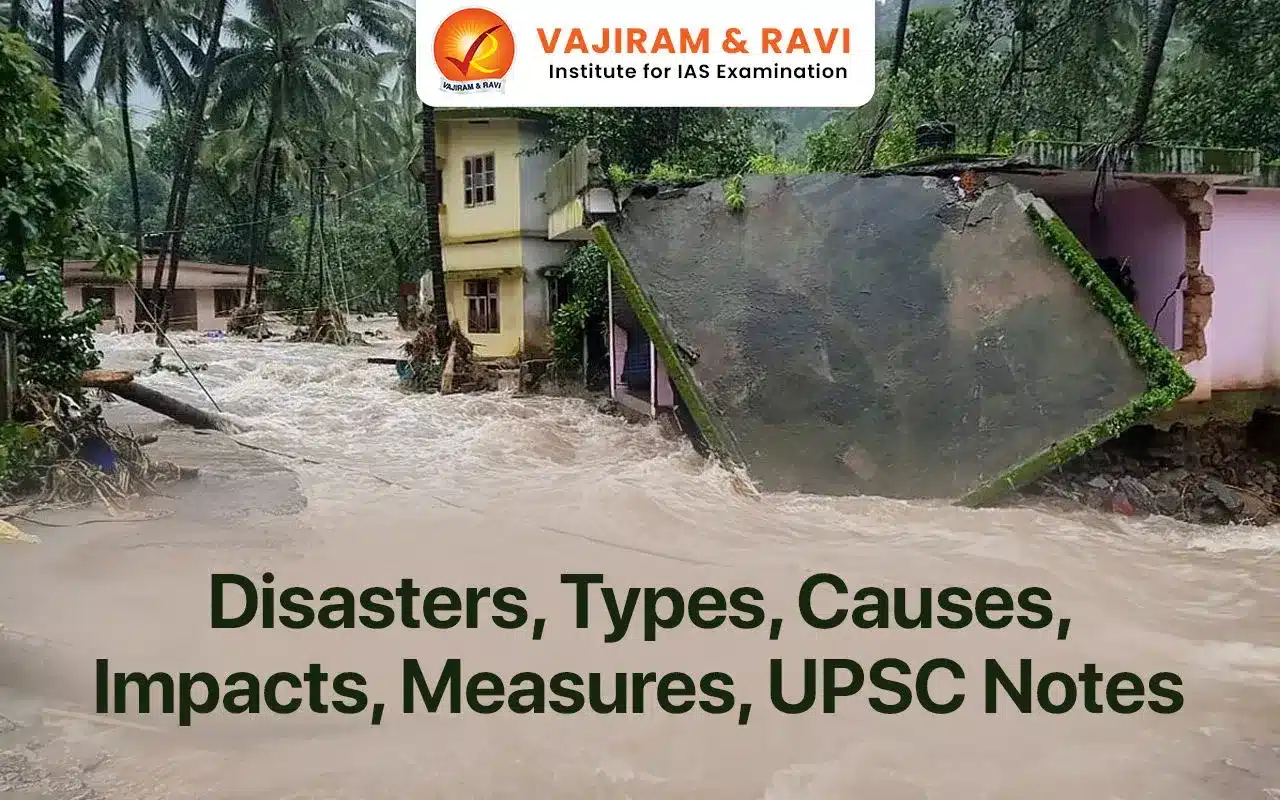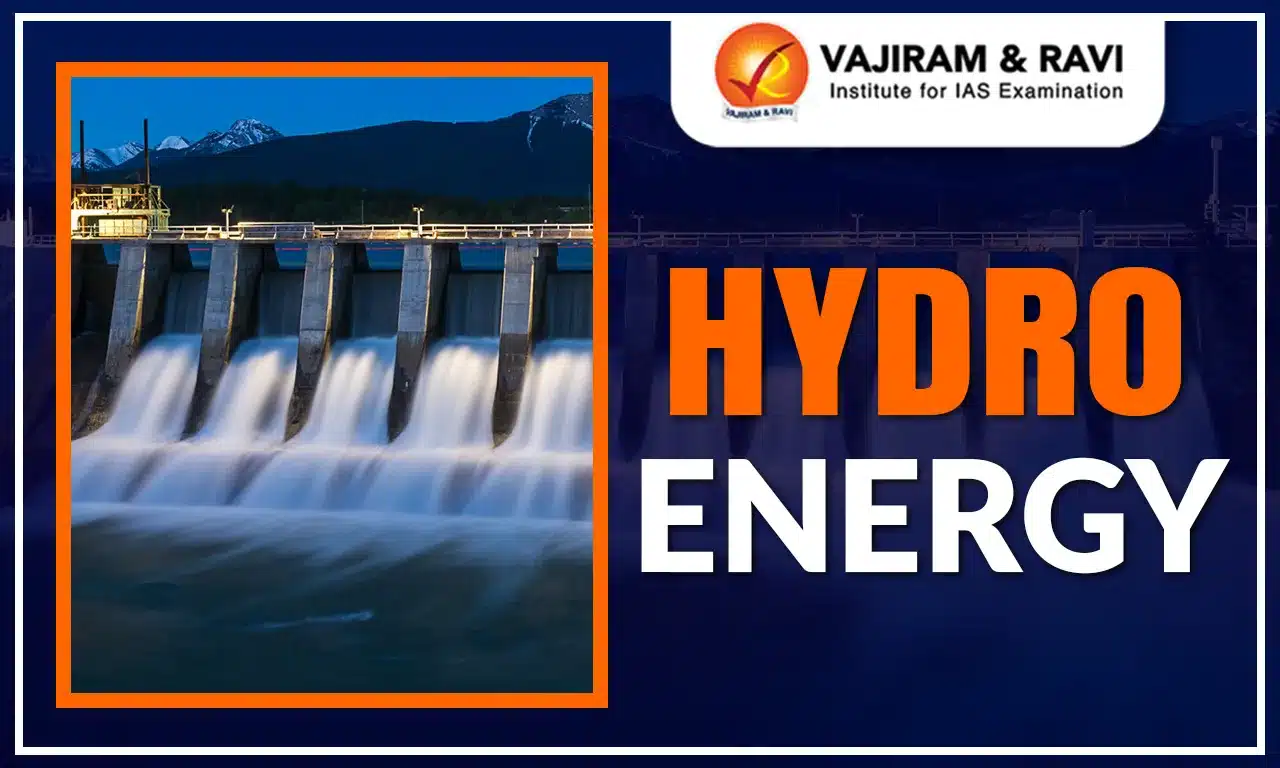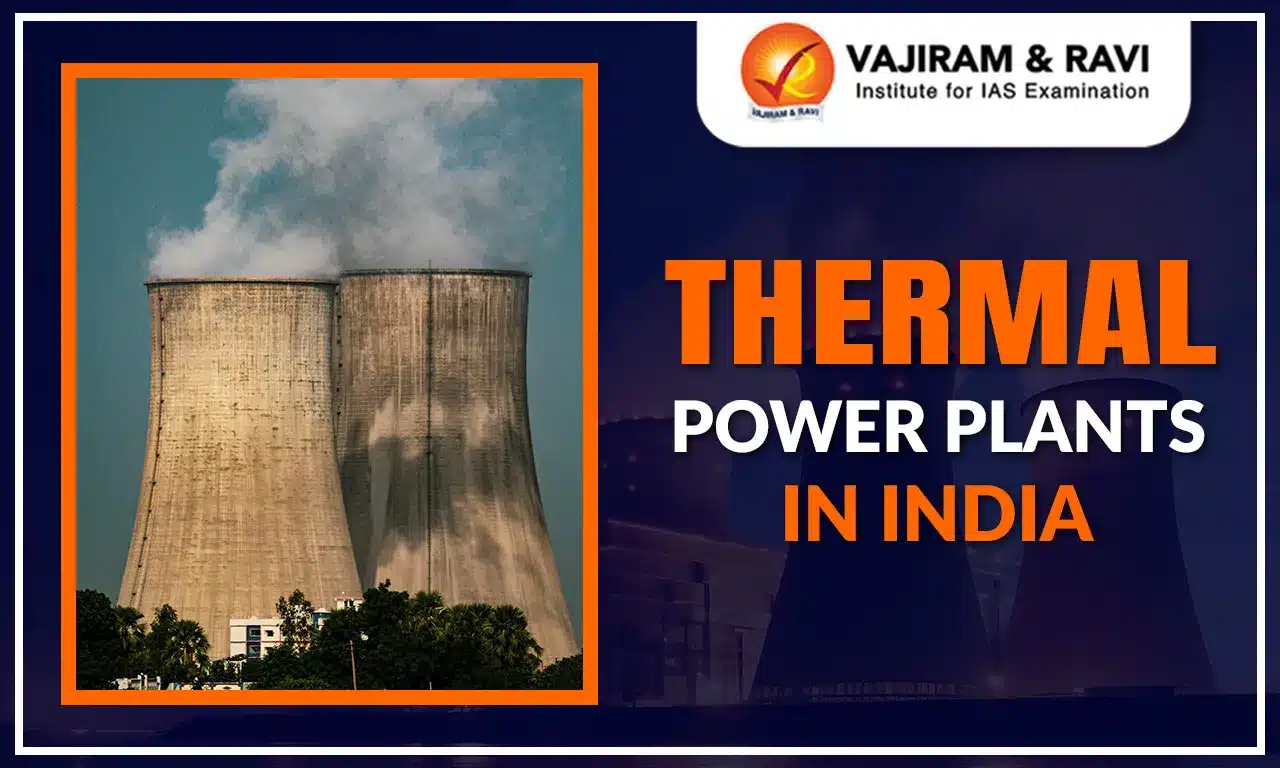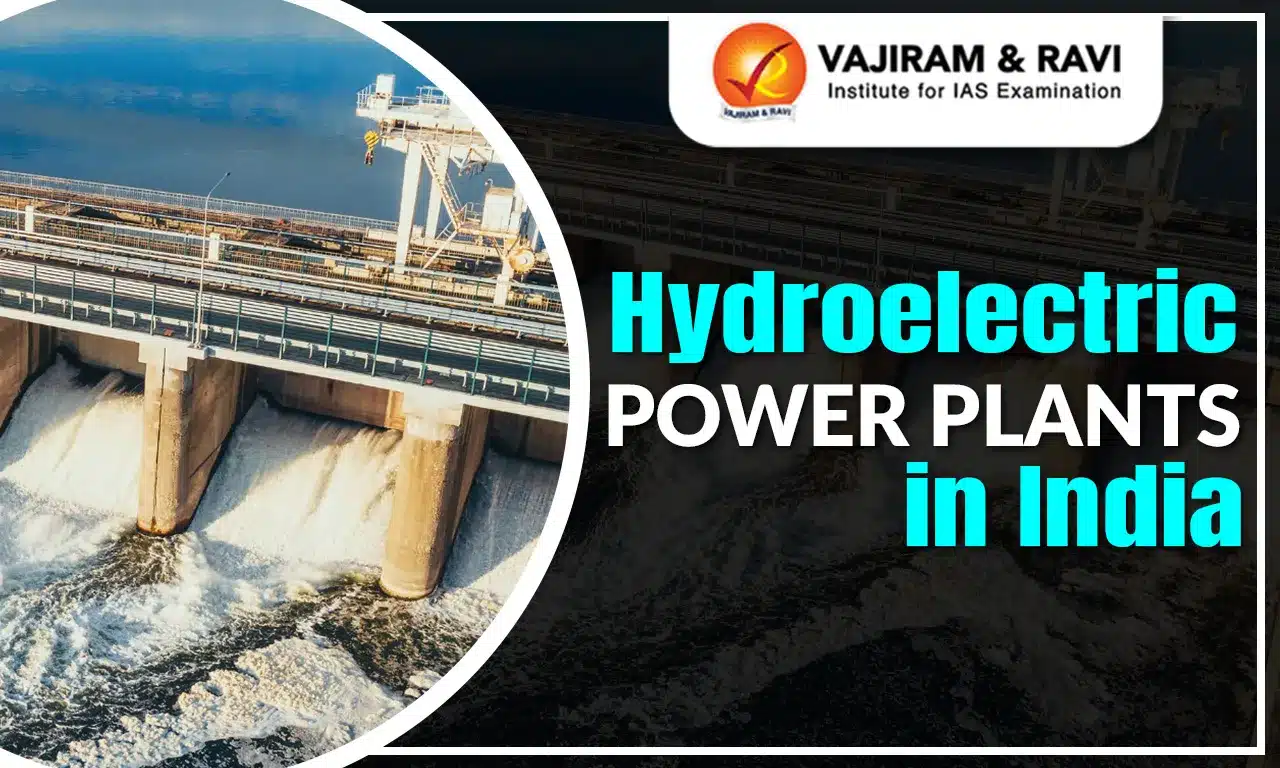Disasters are any natural or human-generated calamities that lead to a significant loss of human life or destruction of the natural environment, private property, or public infrastructure. A disaster may be relatively sudden, such as an earthquake or an oil spill, or it may unfold over a longer period, such as a pandemic or climatic disruption. India has long been prone to natural calamities such as floods, droughts, cyclones, earthquakes, landslides, forest fires, and other man-made disasters involving chemical, biological, and radioactive elements, which highlight the need for improved mitigation, readiness, and response mechanisms.
India is actively adopting disaster management measures such as the establishment of the NDMA and SDMA, as well as at the global level, by signing the Sendai Framework for Disaster Risk Reduction and the Hyogo Framework for Action.
Vulnerability Profile of India
India has been vulnerable to a large number of natural as well as human-made disasters on account of its unique geo-climatic and socio-economic conditions. Out of 36 statesand union territories in the country, 27 of them are disaster-prone.
- Earthquake: According to the latest seismic zoning by the Bureau of Indian Standards (BIS), over 65 percent of the country is prone to earthquakes of intensity Modified Mercalli Intensity Scale (MSK) VII or more.
- The Himalayan region and the intra-plate faults are the regions of strong earthquakes in India.
- Flood: Floods affect an average of 7.5 million hectares out of 40 million flood-prone areas in the country annually.
- Areas drained by the rivers of the Northern Plains are more prone to floods.
- Cyclone and Tsunami: Of the 7,516 km long coastline, close to 5,700 km is prone to cyclones and tsunamis.
- Drought: In India, around 68 percent of the agricultural land is prone to drought in varying degrees.
- Of the total region, 35 percent receives rainfall between 750 mm and 1125 mm, which is deemed drought-prone, while 33 percent receives rainfall less than 750 mm, which is termed chronically dry.
- Landslides: Excluding snow-covered areas, approximately 12.6 percent of the country’s geographical land area is prone to landslides.
- The North-western Himalayas are responsible for up to 66.5 percent of landslides, followed by the North-eastern Himalayas (18.8 percent) and the Western Ghats (14.7 percent).
Causes of Disasters in India
Disaster risks in India are compounded by its climatic conditions, changing demographic and socio-economic conditions, unplanned urbanization, environmental degradation, climate change, etc.
- Geographical factors:
- Tectonic plates: The geo-tectonic features of the Himalayan region and adjacent alluvial plains make the region susceptible to earthquakes, landslides, soil erosion, avalanches, etc.
- Location: India, being situated in the tropical region, is more prone to natural disasters such as cyclones and forest fires.
- Rainfall patterns: India is mainly dependent on monsoon rain. The rainfall pattern is not uniform in India. In some places, like Assam and Bihar, there are frequent floods whereas; the western part of the country, including Rajasthan, Gujarat and some parts of Maharashtra are hit frequently by droughts.
- Lack of infrastructure: The lack of adequate infrastructure and services, unsafe housing, and inadequate and poor health services can turn natural hazards into disasters.
- For example, Poor solid waste management may block stormwater and sewage networks, resulting in waterlogging and flooding.
- Further, rivers of
- Poor Urban Planning: Poor urban planning, inadequate drainage infrastructure, and rapid unregulated growth in cities has caused India’s cities prone to urban flooding.
- For example, Chennai and Mumbai experience severe flash floods almost every year.
- Deforestation and forest degradation: Deforestation leads to surface erosion, which is then linked to shallow, rapid landslides that are triggered by a single event of heavy rainfall.
- Deforestation also causes flooding in forest areas.
- Climate change: Climate change has aggravated the risk of disasters across the world including India.
- Since warmer air can hold more water, it leads to heavier rainfall and extreme floods in some regions.
- Warmer temperatures enhance evaporation, which reduces surface water and dries out soils and vegetation and causes drought in some regions.
- Climate change increases sea surface temperatures, affecting tropical cyclones’ formation and behaviour, leading to faster intensification, stronger wind speeds, and increased rainfall.
Types of Disasters
Primarily disasters are generally triggered by natural hazards human activity, or a combination of the two. The disasters are mainly classified into two types:
- Natural disasters: The disasters that occur naturally are known as natural disasters, such as earthquakes, cyclones, tsunamis, heat waves, landslides, floods etc. These disasters occur both seasonally and without warning, subjecting the nation to frequent periods of insecurity, disruption, and economic loss.
- Man-made disasters: Disasters that are caused due to human interruption are known as man-made disasters, such as industrial disasters, landslides, nuclear disasters etc.
Natural disasters
India is vulnerable to various natural disasters listed below.
- Cyclone: Cyclones are created by atmospheric disturbances that surround a low-pressure area, characterised by rapid and frequently destructive air circulation. They are typically accompanied by strong storms and adverse weather.
- Every year, roughly five or six tropical cyclones emerge in the Bay of Bengal and the Arabian Sea. Out of these, two or three are catastrophic.
- Drought: The primary cause of any drought is a deficiency of rainfall and in particular, the timing, distribution and intensity of this deficiency to existing reserves. One-sixth area of the country is drought-prone.
- It resulted in crop failure, animal deaths, salinization of soil and groundwater decline, increased pollution of freshwater ecosystems, and regional extinction of animal species.
- Tsunami: A tsunami is a series of water waves caused by the displacement of a large body of water, usually an ocean. The Geo-tectonic movements going on in the ocean floor make the coastal region prone to tsunamis.
- Non-seismic events, such as a landslide or the impact of a meteor, may also lead to tsunamis.
- Japan is most prone to tsunamis.
- Tsunamis are anticipated to hit the Indian Ocean rim countries from two recognised tsunamigenic zones: the Andaman-Nicobar-Sumatra island arc and the Makran subduction zone north of the Arabian Sea.
- The Tsunami of 26th December 2004 off the west coast of Sumatra, caused extensive damage to life and property in affected states in India.
- Heatwaves: A Heat Wave is a period of exceptionally high temperatures that occurs throughout the summer season in North-Western India, usually between March and June, but can sometimes last until July.
- According to the IMD, heat waves should not be recognised until a station’s highest temperature hits at least 40°C for plains and 30°C for hilly regions.
- Climate change is increasing the frequency of higher daily peak temperatures and longer, more intense heat waves around the world.
- Landslide: Landslides constitute a major natural hazard in our country, which accounts for considerable loss of life and damage to communication routes, human settlements, agricultural fields, and forest lands.
- Landslides mostly affect the Himalayas and India’s western ghats. The Himalayas are responsible for an estimated 30% of the world’s landslides.
- In the Nilgiris alone, unprecedented rainfall in 1978 created almost one hundred landslides, causing significant damage. A valley in Nilgiris is called ‘Avalanches Valley’.
- Floods: India is highly vulnerable to floods. Floods in India are primarily caused by natural ecological systems like monsoons, silted river systems, and steep and highly erodible mountains, especially in the Himalayan ranges.
- Floods have also occurred in areas previously not considered flood-prone—for example, the 2022 Rajasthan floods.
- Earthquakes: An earthquake is the release of energy that has been built up during the stress of increasing the formation of rock. This energy release takes the form of seismic waves that radiate in all directions from the place of movement.
- India has been categorised into four seismic zones based on the maximum magnitude of the projected earthquake. Zone V is the most active, covering all of Northeast India, the northern part of Bihar, Uttarakhand, Himachal Pradesh, Jammu and Kashmir, Gujarat, and the Andaman and Nicobar Islands.
- Cloudbursts: A cloudburst is a sudden spell of localised, heavy rainfall where the amount of rainfall over a particular area exceeds 100 millimetres in an hour.
- Cloudbursts occur when saturated clouds become unable to produce rain due to the upward passage of a highly warm circulation of air. Instead of dropping down, raindrops grow in size and are propelled up by the air current. They eventually get too heavy to hold and drop down, resulting in more rain than usual.
- They often result in flash floods and have become increasingly common from May to September when the southwest monsoon season prevails in much of the country.
- In October 2023, a cloudburst above Lhonak Lake in North Sikkim caused a glacial lake outburst flood (GLOF) in the Teesta River that triggered a flood.
- GLOF (Glacial Lake Outburst Flood): A GLOF is a flood resulting from the sudden and rapid release of water from a glacial lake, often caused by the failure of a moraine dam or ice dam.
- Climate change-induced glacial melt, seismic activity, and changes in glacial morphology are key risk factors for GLOFs.
- It can result in devastating downstream flooding, destruction of infrastructure, and loss of life.
- Rivers of the Himalayan regions, especially in Uttarakhand are most prone to the GLOF.
Man-made disasters
The human-induced factors can greatly aggravate the adverse impacts of a natural disaster. Human-induced factors like climate change, industrialization, and urbanization increase the frequency and intensity of extreme weather events, thereby escalating the potential for damage to life and property.
- Industrial and chemical disasters: These are caused by chemical, mechanical, civil, electrical, or other factors like failures due to accident, negligence or incompetence in an industrial plant.
- Chemical disasters are the occurrence of emission, fire or explosion involving one or more hazardous chemicals during industrial activity (handling), storage, or transportation or due to natural events leading to severe effects inside or outside the installation.
- Both can result in extensive damage to the environment with considerable human and economic costs.
- The Bhopal Gas Tragedy in 1984 was India’s worst chemical disaster, resulting in over tens of thousands of deaths due to the accidental release of toxic gas Methyl Iso Cyanate.
- Biological disasters: Biological disasters are caused by phenomena of organic origin or transmission by biological vectors, such as exposure to infectious microorganisms, toxins, and bioactive compounds.
- Biological disasters include epidemic disease outbreaks, plant or animal contagion, insect or animal plagues, and infestations. Biological disasters may be in the form of:
- Epidemic– It affects a disproportionately large number of people in a population, group, or region at the same time; examples include cholera, plague, and acute encephalitis syndrome.
- Pandemic– Pandemic is an epidemic that spreads across a large region, a continent, or even worldwide of existing, emerging, or reemerging diseases and pestilences, an example being Influenza H1N1 (Swine Flu) and COVID-19.
- Biological disasters include epidemic disease outbreaks, plant or animal contagion, insect or animal plagues, and infestations. Biological disasters may be in the form of:
- Urban floods: Rapid urbanisation and unplanned development along rivers and watercourses have led to increased runoff and urban floods due to the encroachment of sprawling habitations.
- Flooding occurs quickly due to faster flow times (in minutes), hence called flash floods.
- India has experienced an increasing number of urban flood disasters, with the most devastating ones being Srinagar in 2014 and Chennai in 2015.
Effects of the Disasters
Disasters, whether natural or man-made, have consequences for both humans and the environment. Different disasters bring with them different effects. It can be summarised below:
- Loss of life and property: With a dense population living in a limited area, there is a tremendous loss of life and property. It also leads to the loss of agricultural and animal life.
- Economic loss: Due to the destruction of public and private infrastructure, and loss of tourism the burden shifts on the public exchequer.
- According to global insurance giant Swiss Re, Natural disasters in India have caused uninsured economic damages of $32.94 billion (Rs 273,500 crore) during the five periods of 2018-22.
- Interruption of normal business: Disasters led to interruption in many services transportation, communication, public gatherings, etc.
- Most of the companies in the country do not have a recovery plan in place for their vital IT infrastructure during times of both man-made and natural disasters.
- Environmental losses: It includes natural resource depletion, reduced access to clean air, safe water, diminished biodiversity, soil degradation, etc.
- For example, landslides can wipe out large tracts of forest, destroy wildlife habitat, and remove productive soils from slopes.
- Environmental loss due to forest fires such as the catastrophe forest fire in Australia 2019-20, frequent forest fires in Uttarakhand, and the Amazon forest fire are examples of environmental loss.
- Tropical cyclones significantly impact coastal communities, particularly coral reefs, affecting coral cover, species diversity, and reef productivity.
- Health effects: Man-made disasters like nuclear accidents, oil spills, etc. significantly impact health. It may cause neurological disorders, acute radiation syndrome, etc.
- A major disaster in a country like India may induce after-effects like poverty, hunger, and malnutrition.
Disasters UPSC PYQs
Question 1: Vulnerability is an essential element for defining disaster impacts and its threat to people. How and in what ways can vulnerability to disasters be characterized? Discuss different types of vulnerability with reference to disasters. (UPSC Mains 2019)
Last updated on April, 2025
→ UPSC Notification 2025 was released on 22nd January 2025.
→ The UPSC Vacancy 2025 were released 1129, out of which 979 were for UPSC CSE and remaining 150 are for UPSC IFoS.
→ UPSC Admit Card 2025 is released now for CSE Prelims Exam 2025.
→ The UPSC Prelims 2025 is scheduled to be conducted on 25th May 2025 and UPSC Mains 2025 will be conducted on 22nd August 2025.
→ Apply once through it and aspirants can apply for various government exams conducted by UPSC.
→ The UPSC Selection Process is of 3 stages-Prelims, Mains and Interview.
→ UPSC Result 2024 is released with latest UPSC Marksheet 2024. Check Now!
→ UPSC Toppers List 2024 is released now. Shakti Dubey is UPSC AIR 1 2024 Topper.
→ Also check Best IAS Coaching in Delhi
Disasters FAQs
Q1. What are natural disasters?+
Q2. What are the types of disasters?+
Q3. What are Biological disasters?+
Q4. How is India cooperating internationally for disaster risk reduction?+
Q5. What is the Sendai Framework?+
















